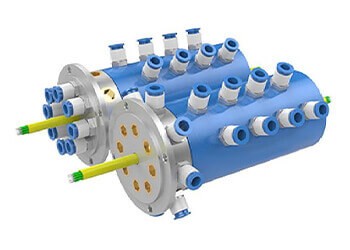In the world of international trade, efficient and accurate classification of goods is crucial. Harmonized System (HS) codes, an internationally recognized coding system, play a vital role in facilitating smooth trade across borders. For industries involved in the import and export of electrical slip rings, understanding the HS code is of utmost importance. In this article, we unravel the mystery surrounding the HS code for electrical slip rings, shedding light on its significance, classification process, and the impact it has on global trade. Prepare to embark on a journey of discovery as we decode the HS code for electrical slip rings!
- Understanding the HS Code
- The Significance of HS Code for Electrical Slip Rings
- Classification Process for Electrical Slip Rings
- HS Code for Electrical Slip Rings
- Impact on Global Trade
- Seeking Professional Assistance
Understanding the HS Code
The HS code, part of the Harmonized System developed by the World Customs Organization (WCO), is a standardized numerical coding system used to classify products for international trade. Each product is assigned a unique code that identifies its characteristics and enables uniform classification across different countries.
The Significance of HS Code for Electrical Slip Rings
a) Facilitating International Trade: HS codes provide a common language for customs authorities and traders worldwide. Accurate classification of electrical slip rings using the HS code ensures smooth customs clearance, minimizing delays and avoiding potential penalties or disputes.
b) Tariff Determination: HS codes play a vital role in determining applicable import/export duties, taxes, and regulations. By classifying electrical slip rings correctly, importers and exporters can assess the associated costs and comply with relevant trade policies.
Classification Process for Electrical Slip Rings
a) Identifying the Essential Characteristics: To determine the appropriate HS code for electrical slip rings, it is crucial to consider their essential characteristics. Factors such as design, materials, functionality, and intended use are taken into account during the classification process.
b) Referencing the HS Code Database: Customs authorities provide access to databases containing HS codes and corresponding product descriptions. Traders can consult these databases or seek guidance from experts to identify the specific HS code for electrical slip rings.
c) Multiple Classification Possibilities: Electrical slip rings can fall under different HS codes based on variations in design, purpose, or construction materials. It is essential to review the relevant sections, chapters, and subheadings of the HS code to accurately classify the specific type of electrical slip ring.
HS Code for Electrical Slip Rings
The specific HS code for electrical slip rings may vary depending on factors such as the type of slip ring, construction materials, and functionality. The most common HS code for electrical slip rings is:
HS Code: 8536.50
This code falls under Chapter 85 – Electrical Machinery and Equipment and their Parts, and specifically refers to “Electrical Apparatus for Switching or Protecting Electrical Circuits or for Making Connections to or in Electrical Circuits (e.g., Switches, Fuses, Lightning Arresters, Voltage Limiters, Surge Suppressors, Plugs, Junction Boxes), for a Voltage Not Exceeding 1,000 V.”
Impact on Global Trade
Accurate classification of electrical slip rings using the appropriate HS code is crucial for the global trade of these components. It ensures compliance with customs regulations, enables efficient supply chain management, and facilitates fair competition among traders. Importers and exporters rely on the correct HS code to navigate international trade procedures, determine costs, and fulfill legal obligations.
Seeking Professional Assistance
Given the complexity of HS codes and the potential variations in classification for electrical slip rings, it is advisable for importers and exporters to seek professional assistance. Customs brokers, trade consultants, or industry experts can provide guidance in accurately determining the appropriate HS code, ensuring compliance, and optimizing trade operations.
The HS code holds immense significance in the world of international trade, acting as a universal language for classifying goods. For the importers and exporters of electrical slip rings, understanding the HS code is crucial for smooth customs clearance, tariff determination, and compliance with trade regulations. By accurately classifying electrical slip rings using the appropriate HS code, traders can navigate global trade with confidence, ensuring efficient operations and minimizing potential hurdles.
See What We Can Do

